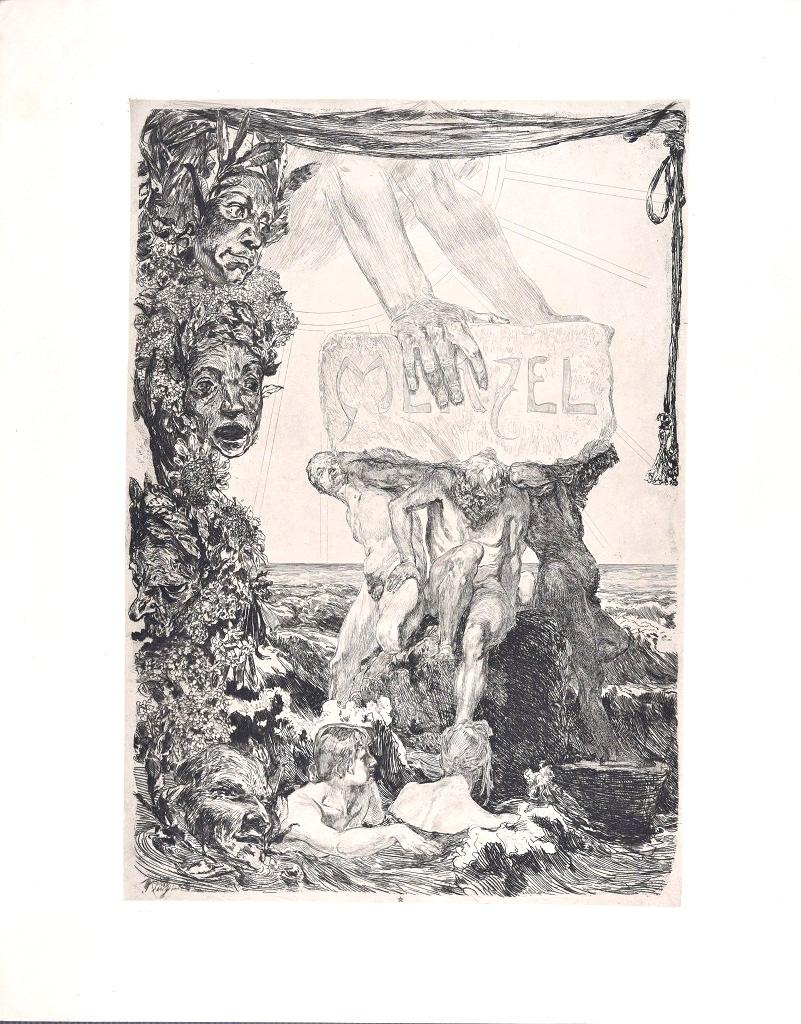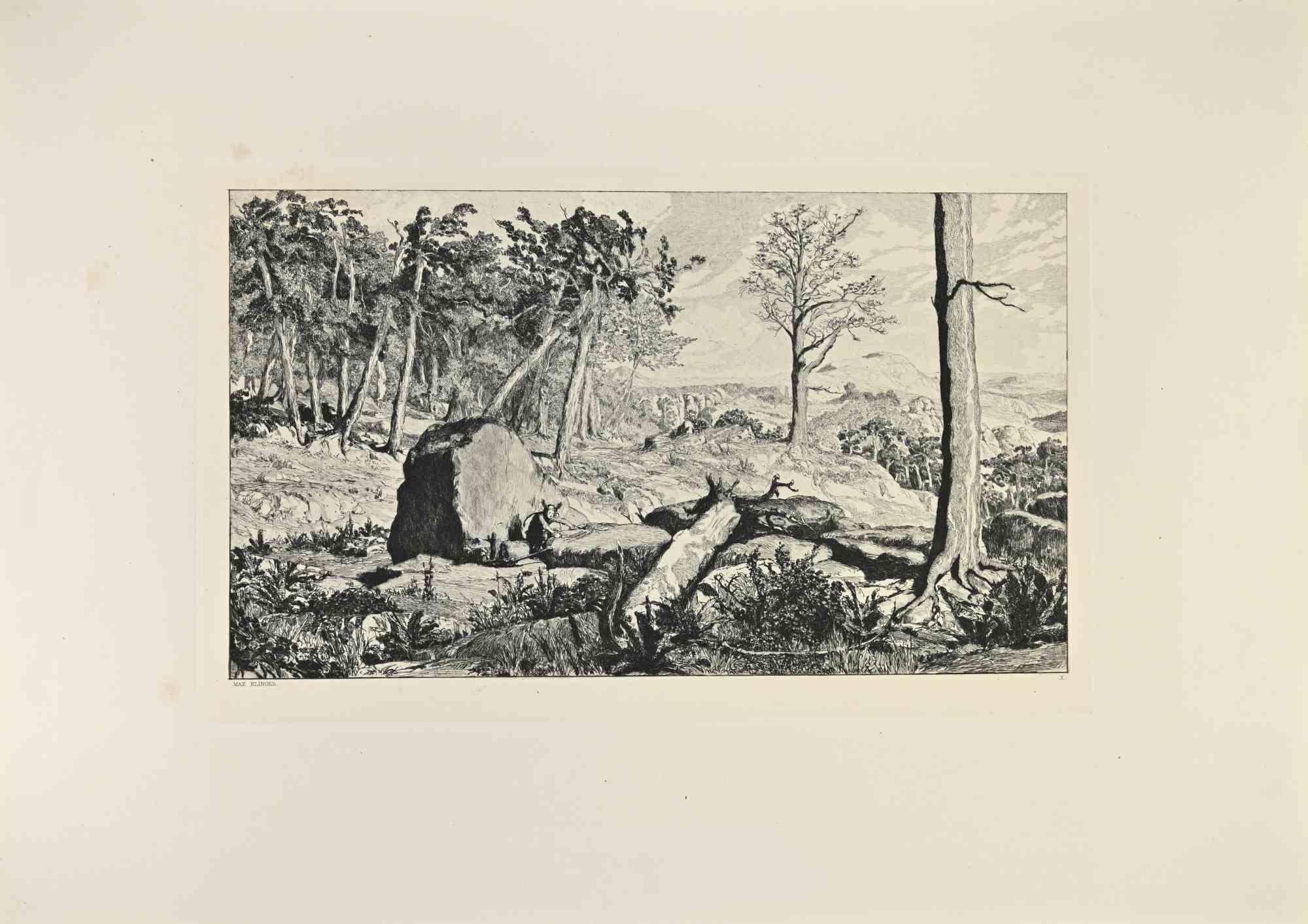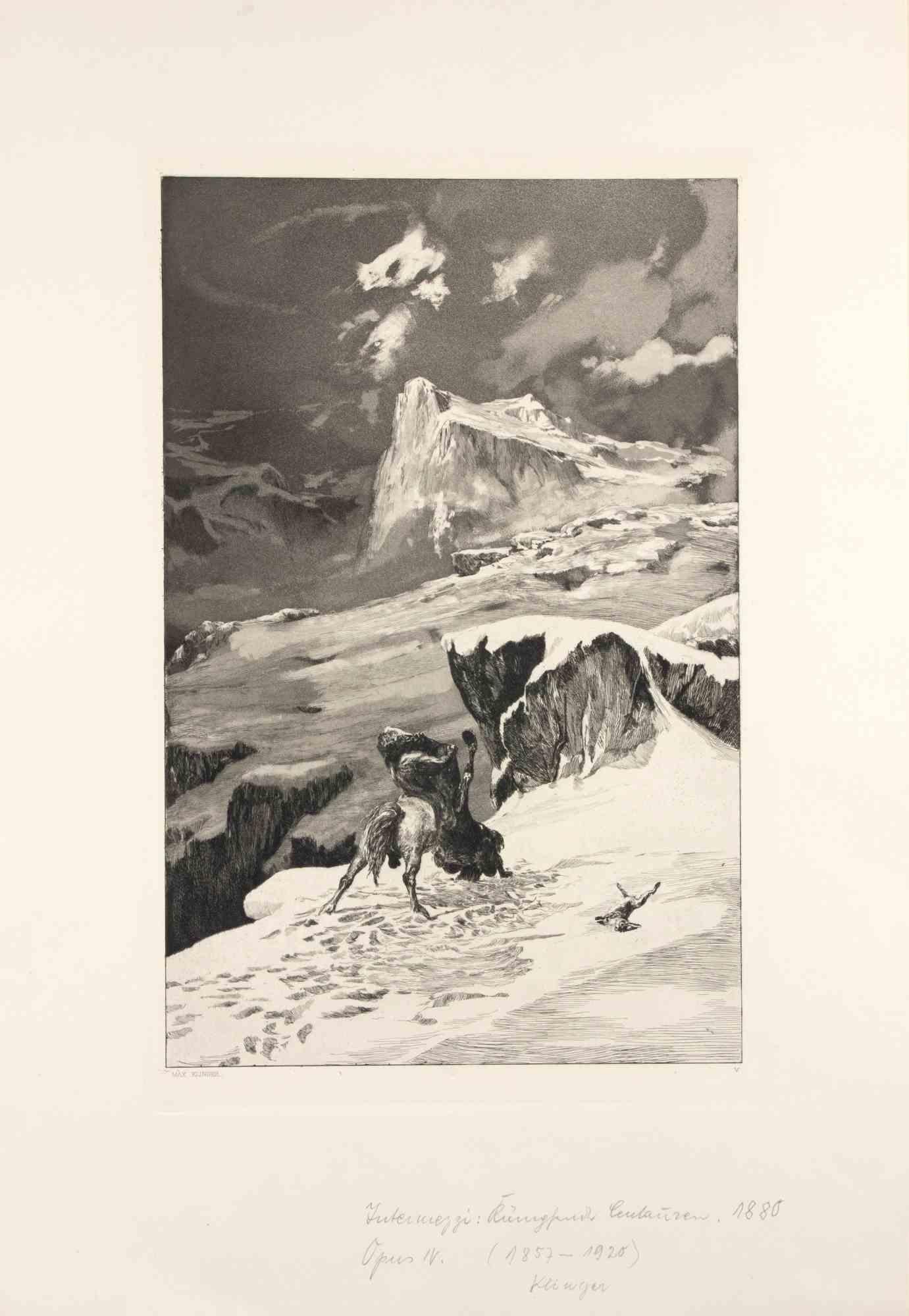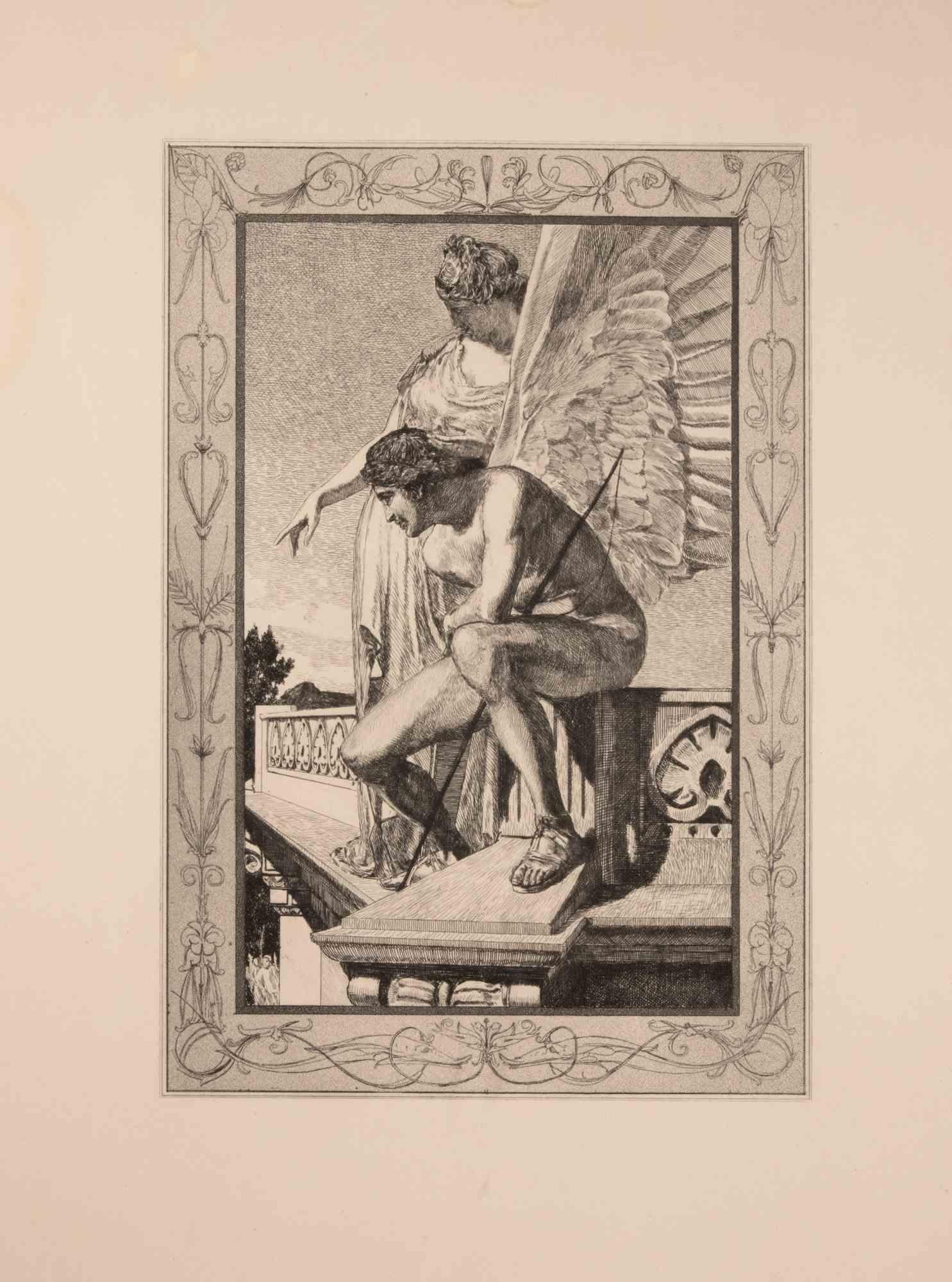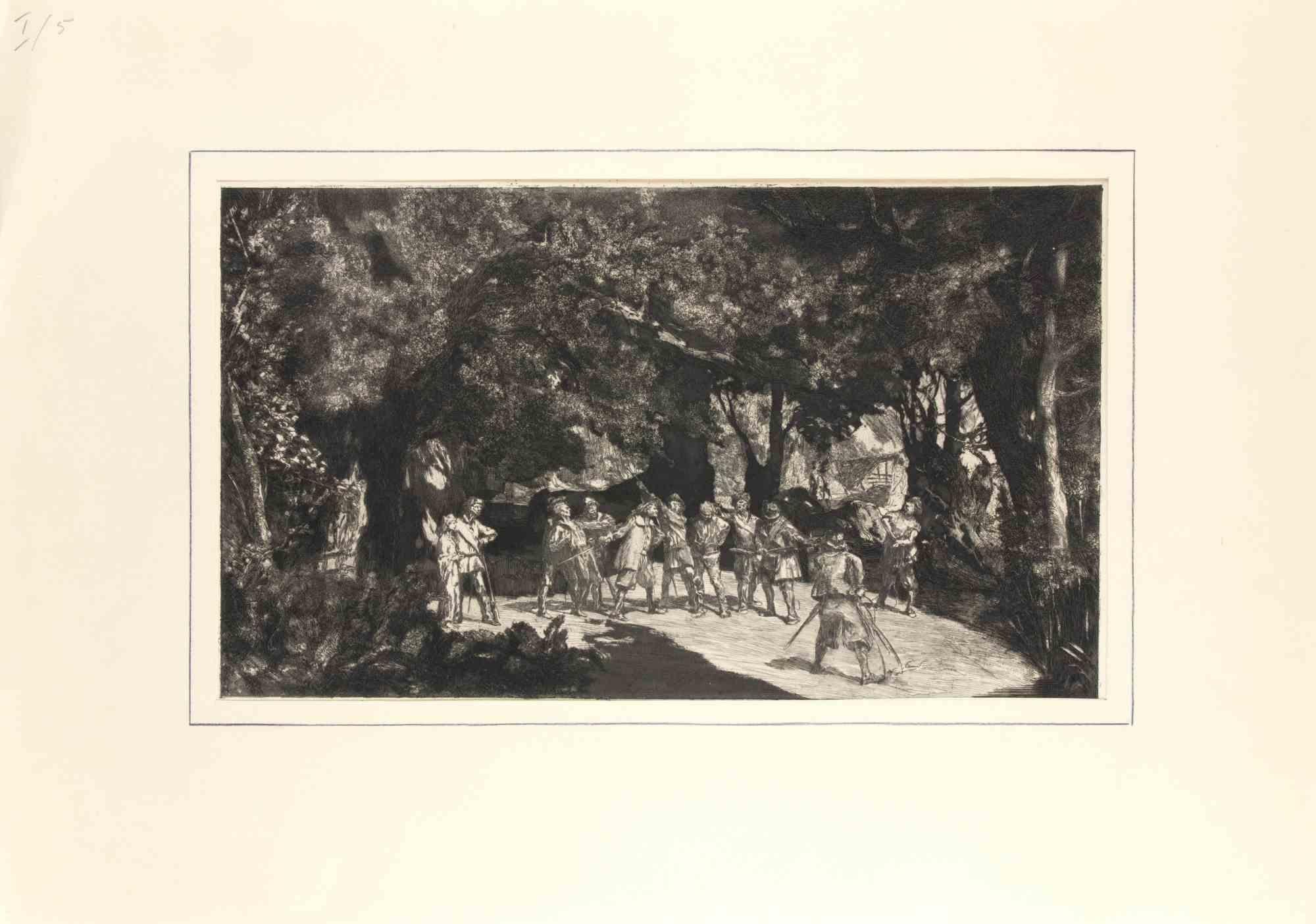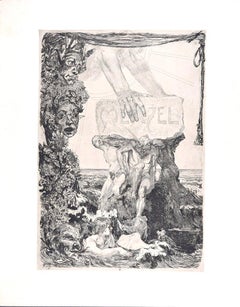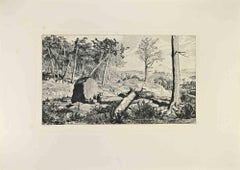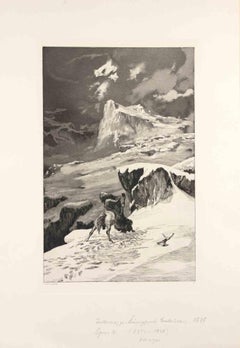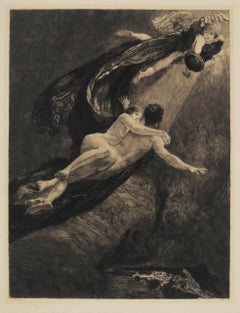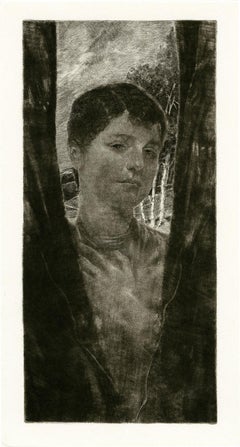Items Similar to Der Zeichner - Etching by Unknown Artist of circle of Max Klinger
Want more images or videos?
Request additional images or videos from the seller
1 of 5
UnknownDer Zeichner - Etching by Unknown Artist of circle of Max Klinger1900 ca.
1900 ca.
$802.46
£609.82
€680
CA$1,127.49
A$1,236.26
CHF 646.28
MX$14,806.60
NOK 8,152.72
SEK 7,647.25
DKK 5,181.62
About the Item
Der Zeichner is a superb etching made around 1900 by a still unknown author, but surely from the circle of Max Klinger (Leipzig, 1857 - Grossjena, 1920).
Title on plate in the lower margin in the center. Posthumous impression of a matrix by an unknown author.
The style refers to the Griffelkunst and the prescriptions of the Max Klinger "school of stylus"and of the artists who were close to him. In particular, for the subject in question, in the circle of Max Klinger, Saschia Schneider stands out, who placed male nudity at the center of his production and his formal research.
The title, Der Zeichner, recalls that of the Klinger's treaty "Malerei und Zeichnung" and the meanings attached to it, that is, it combines in the figuration and in the poetics the liberating dictates and instances of the so-called reform of life and the neo-Greek cult of the body, also the homoerotic sense, carried out by Saschia Schneider himself and by German magazines such as "Die Schonheit" and "Der Eigene".
Very interesting work, made with an infinite variety of strokes and a wide range of tones from black to white, in excellent condition and in good general preservation, except for minimal marginal tears and some marginal folds.
Sascha Schneider, stage name of Rudolph Karl Alexander Schneider (St. Petersburg, 1870 - Swinemünde, 1927).
The German painter and sculptor enters the world of art when, in 1903 he meets the famous writer Karl May and soon became the illustrator of the covers of his books Winnetou, Old Surehand, Am Rio de la Plata. A year later, in 1904, Schneider was appointed professor at the Großherzoglich-Sächsische Kunstschule Weimar in Weimar. During this period he lived a not happy cohabitation with the painter Hellmuth Jahn, who woul make public the Schneider's homosexuality (at the time punishable under article 175 of the penal code). So he decided to move to Italy, where homosexuality was not considered a crime. Here Schneider met the painter Robert Spies with whom he began a journey in the mountains of the Caucasus chain. He eventually returned to Germany where he stayed for about six months in Leipzig before returning to Italy, settling in Florence. After 1918 he founded the Kraft-Kunst institute for body building, an environment that provided him with many models for his works.
- Creation Year:1900 ca.
- Dimensions:Height: 30.32 in (77 cm)Width: 21.26 in (54 cm)Depth: 0.04 in (1 mm)
- Medium:
- Movement & Style:
- Period:
- Condition:Insurance may be requested by customers as additional service, contact us for more information.
- Gallery Location:Roma, IT
- Reference Number:Seller: M-1016401stDibs: LU65034469852
About the Seller
4.9
Platinum Seller
Premium sellers with a 4.7+ rating and 24-hour response times
1stDibs seller since 2017
7,787 sales on 1stDibs
Typical response time: 1 hour
- ShippingRetrieving quote...Shipping from: Roma, Italy
- Return Policy
Authenticity Guarantee
In the unlikely event there’s an issue with an item’s authenticity, contact us within 1 year for a full refund. DetailsMoney-Back Guarantee
If your item is not as described, is damaged in transit, or does not arrive, contact us within 7 days for a full refund. Details24-Hour Cancellation
You have a 24-hour grace period in which to reconsider your purchase, with no questions asked.Vetted Professional Sellers
Our world-class sellers must adhere to strict standards for service and quality, maintaining the integrity of our listings.Price-Match Guarantee
If you find that a seller listed the same item for a lower price elsewhere, we’ll match it.Trusted Global Delivery
Our best-in-class carrier network provides specialized shipping options worldwide, including custom delivery.More From This Seller
View AllMenzel Fest-Blatt - Original Etching by Max Klinger - 1884
By Max Klinger
Located in Roma, IT
Menzel Fest-Blatt is a fine black and white etching on Japon paper, realized in 1884 by the artist Max Klinger (Leipzig, 1857- Grossjena 1920), and published in the "Max Klinger-Album" in 1925.
Signed on plate on lower left corner.
In excellent conditions: as good as new
Reference:
Singer, n. 268
Max Klinger Album
Composed of 30 etchings realized by the German master and selected by Johannes Hartmann and Felix Becker, this wonderful portfolio was edited by Siegfried Wagner for the Museumsverein Naumburg .
Exactly five years after Max Klinger's death, in 1925, Johannes Hartmann and Felix Becker put together an album containing the artist's 30 most beautiful etchings. Both Hartmann, who managed Klinger's vineyard where the artist was buried, and the art historian that wrote the text accompanying the graphic...
Category
1890s Symbolist Figurative Prints
Materials
Paper, Engraving
Opus IV, Simplicius in der Waldeinode - Etching by Max Klinger - 1881
By Max Klinger
Located in Roma, IT
Opus IV, Simplicius in der Waldeinode (Simplicius in the Wilderness) belongs to a series of prints called Intermezzi realized by Max Klinger, published by Nurnberg: Stroefer, 1881.
...
Category
1880s Symbolist Figurative Prints
Materials
Etching
Opus IV, Simplicius in der Waldeinode - Etching by Max Klinger - 1881
By Max Klinger
Located in Roma, IT
Opus IV, Simplicius in der Waldeinode (Simplicius in the Wilderness) belongs to a series of prints called Intermezzi realized by Max Klinger, published by Nurnberg: Stroefer, 1881.
...
Category
1880s Symbolist Figurative Prints
Materials
Etching
Kämpfende Kentauren - Etching by Max Klinger - 1881
By Max Klinger
Located in Roma, IT
Kämpfende Kentauren (Fighting Centaurs), is an etching and aquatint realized by Max Klinger in 1881. Plate V from “Intermezzi” Opus IV, 2nd state on 2, first edition.
Here the art...
Category
1880s Symbolist Figurative Prints
Materials
Etching
Venus zeigt Amor Psyche - Etching by Max Klinger - 1880
By Max Klinger
Located in Roma, IT
Etching and aquatint realized in 1880, belonging to the Series "Amor und Psyche", Opus V.
Ref. Singer 67, IV.
Excellent condition.
Category
1880s Symbolist Figurative Prints
Materials
Etching
Opus IV Unter den Soldaten Rad - Etching by Max Klinger - 1881
By Max Klinger
Located in Roma, IT
Opus IV Unter den Soldaten Rad belongs to a series of prints called Intermezzi realized by Max Klinger, published by Nurnberg: Stroefer, 1881.
Etching on paper.
Signed in the plate...
Category
1880s Symbolist Figurative Prints
Materials
Etching
You May Also Like
Neue Träume von Glück (New Dreams of Happiness)
By Max Klinger
Located in Fairlawn, OH
Neue Träume von Glück (New Dreams of Happiness)
Etching on heavy laid paper without watermark, 1887
Unsigned, as usual
From: Eine Liebe (Opus X) [A Love (Opus X)], Plate No. 7
fourth...
Category
1880s Expressionist Nude Prints
Materials
Etching
'Erinnerung (Remembrance)' — Turn-of-the Century Romanticism
By Max Klinger
Located in Myrtle Beach, SC
Max Klinger, 'Erinnerung' (Remembrance), original etching with aquatint, 1896. A fine, richly inked impression on off-white, wove paper, with full margins (1 3/4 to 3 1/8 inches), in...
Category
1890s Post-Impressionist Figurative Prints
Materials
Etching, Aquatint
Kraft und Mut (Courage and Strength), German antique engraving
Located in Melbourne, Victoria
'Kraft und Mut'
(Courage and Strength)
German wood-engraving, 1903.
320mm by 230mm (image)
280mm by 410mm (sheet)
Category
Early 20th Century Symbolist Figurative Prints
Materials
Engraving
R. Layni, Zeichnungen folio, "Torso" Collotype plate IV
Located in Palm Beach, FL
Egon Schiele (1890 – 1918), AUSTRIA
“ART CANNOT BE MODERN, ART IS PRIMORDIALLY ETERNAL.” -SCHIELE
Defiantly iconoclastic in life and art, Egon Schiele is esteemed for his masterful...
Category
1910s Vienna Secession Figurative Prints
Materials
Paper
"Der Maler in der Landschaft" original etching
Located in Henderson, NV
Medium: original etching. Printed in 1919 and published in Berlin by Paul Cassirer. Plate size: 6 1/2 x 4 1/4 inches (165 x 110 mm). Not signed.
Category
1910s Realist Prints and Multiples
Materials
Etching
Untitled (2/23), Surrealist Aquatint Etching by Hans-Georg Rauch
By Hans-Georg Rauch
Located in Long Island City, NY
Hans-Georg Rauch, German (1939 - 1993) - Untitled (2/23), Year: 1978, Medium: Etching with Aquatint, signed and numbered in pencil, Edition: 100, Size: 23 x 15 in. (58.42 x 38....
Category
1970s Surrealist Landscape Prints
Materials
Etching, Aquatint
More Ways To Browse
Degas Ballerina Etchings
Degas Signed Lithograph
Dieu Et Mon Droit
Distorted Face Paintings
Donna Evans
Earl Washington
Eduardo Paolozzi On Sale
Edward Borein Etching
Edward Millman
El Cid
Engravings Shakespeare
Ernie Barnes On Sale
Erte Autumn
Erte Four Seasons
Erte Letter D
Erte Letter L
Erte Letter T
Erte Nocturne Serigraph
